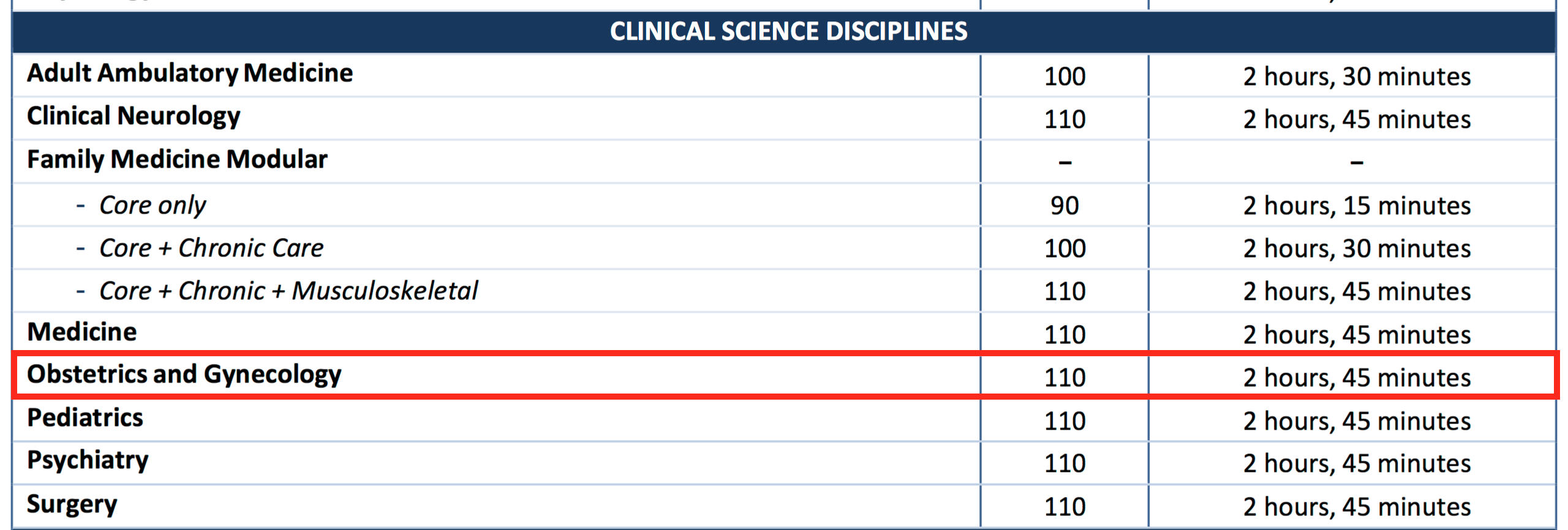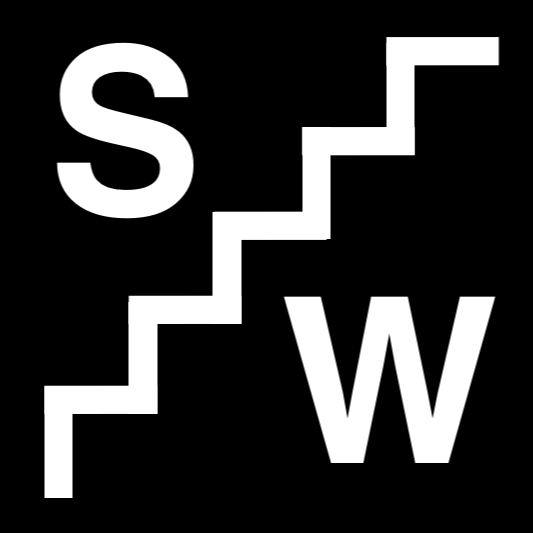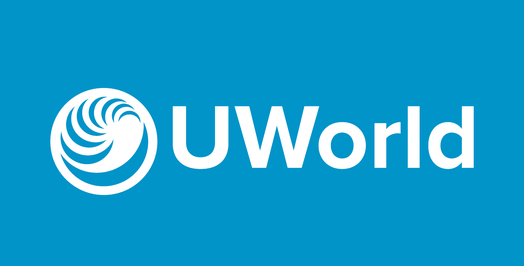Page Contents
OVERVIEW
This page is dedicated to discussing the core elements of the OBGYN shelf. The OBGYN shelf is one of the exams created by the National Board of Medical Examiners (NBME) and it is administered to students by individual medical institutions.

WHAT ARE SOME OF THE BASICS?
While this was already introduced on the Standardized Exams For The Medical Student page there are a few key points to keep in mind when thinking about the OBGYN shelf exam.
What is the point of this exam?
The purpose of this exam is to try and assess one’s mastery of the clinical knowledge learned during a medical student’s third year OBGYN clerkship. With this in mind, it is probably important to realize that much of the content that is covered on this exam won’t necessarily come up in every OBGYN rotation, and requires dedicated studying (specific to the exam) on the part of the student (read more below regarding recommended resources).
When does one take the exam?
The OBGYN shelf exam is generally scheduled to be taken in a student’s third year in medical school, at the end of their OBGYN block rotation.
What is the format of the exam?
The OBGYN shelf is 110 questions long (all vignette based multiple choice, with varying numbers of answer choices), and students are given 2 hours and 45 minutes to complete each exam. Looking at the official NBME document here this information can be found under the “Clinical Science Disciplines Section”.

Currently these exams are offered in either paper or electronic formats. The specifics of this vary by the institution administering the exam (although slowly more programs are transitioning to providing students with electronic versions of these shelf exams).
How is the exam graded?
The NBME initially will calculate an objective raw score for each exam. This is compared to the national exam for each specific exam (at the time it was taken) and translated into a national percentage for each student (i.e. how each student compares amongst all the different testers throughout the nation who have taken the same exam).
WHAT ARE SOME OF THE “CORE” RESOURCES I SHOULD USE WHEN PREPARING FOR THIS EXAM?
It is important to realize that there is always subjectivity when deciding which resources one should use for the shelf exams. In this section the goal is to try and lay out the most objectively useful resources that arguably should be considered by ALL students preparing for their OBGYN shelf exam:
This Website (Stepwards.com): It is important to realize that a large element for creating this website was to craft resources for medical students to help make preparing for the standardized exams (like the shelf exam) much easier. Much of the content on here has been created during the process of preparing for the OBGYN shelf exam, and is fundamentally useful in helping students prepare for the test.

Here are a few specific sections of the website that are especially “high yield” for neurology shelf studying:
- USMLE Content Outline (Pregnancy, Childbirth, & the Puerperium, Female Reproductive System & Breast): much of the content that is listed on this official USMLE outline also overlaps with what is tested on the OBGYN shelf exam.
- Archive of standardized exam questions (OBGYN Questions): This page is dedicated to organizing various examples of standardized exam questions BY THE DISEASE THEY ARE ASKING ABOUT. While this may seem a odd practice, it is useful to see multiple examples of how certain diseases will be characterized on standardized exams. The purpose of this archive is not to serve as a question bank, but instead as a study tool used to familiarize oneself with how diseases are characterized on common exams (namely the boards and the shelf exams). This particular archive is dedicated diseases within the field of OBGYN.
Official NBME Practice Examinations: these exams are created by the testmakers of the shelf exam. Fundamentally it is very hard to come up for a reason why a student would not take these exams as preparation for the OBGYN shelf. They are in the same format as the real thing (because they are retired questions from previous shelf exams). No other resource comes close in crafting questions that represent the actual exam accurately.

Below are some key points to realize when thinking about these NBME practice exams:
- Where to find them: To find the NBME practice exams log into their self assessment website and look under the “Clinical Science Mastery Series” where the OBGYN exams will be listed.
- Details of the exam: There are 4 exams offered as of now. Each one is 50 questions long and costs $20 to purchase.
- Answer key/explanations: It is VERY IMPORTANT TO REALIZE THAT THESE EXAMS DO NOT COME WITH AN ANSWER KEY OR EXPLANATIONS. It is for this reason that many students gravitate away from using this resource. NOT TO WORRY much of the content that is tested on these exams can be found on Stepwards.com! Leverage the search feature on this site when working through these exams.
UWorld Step 2 CK Question Bank: it is important to realize that this question bank is NOT created by the testmakers of the shelf exam. With this in mind, it is fairly universally accepted as being helpful in preparing for the shelf exams. The questions are designed to test in preparation for the Step 2 CS exam, however much of the content is very relevant for the shelf exams. This question bank can be found here.

APGO uWISE Question Bank: The association of professors of gynecology and obstructs (APGO) has created a question bank (uWISE) that has been used by many students to study for the shelf exam. Opinions are mixed regarding the utility of this resource, however most students will go through these question banks at least one time as it (generally speaking) is an expected part of studying for the OBGYN shelf exam. Gaining a login to the APGO website may require coordinating with the medical school administration, and it is required for full access to the uWISE question bank. This question bank can be found here.

WHAT ARE SOME OTHER RESOURCES WORTH EXPLORING?
While the rest of the resources listed below can all be very useful, it is important to realize that it is really not practical to purchase and read through them all. Every student needs to be true to their own learning style and invest in the books that are tailored to their educational needs. Below are some resources that are worth considering.
Blueprints In OBGYN: this book was not necessarily created with the intention of preparing students for the shelf exam (it instead is geared towards the USMLE Step 2 & 3 exams), however does provide an excellent review of many different OBGYN concepts/diseases. This book can be found here.
Case Files OBGYN: this book is unique in that it uses “real-life” OBGYN cases to help teach students in the context of patient presentations. It also features review questions that are aimed to replicate the USMLE board format. This book can be found here.
Pre Test OBGYN: this resource is interesting in that it is entirely composed of hundreds of questions that aim to replicate the USMLE board question style format. This book can be found here.
**OTHER RESOURCES THAT MAY BE USEFUL TO STUDENTS MAY EXIST EVEN IF THEY ARE NOT LISTED ABOVE**
Page Updated: 12.19.2016